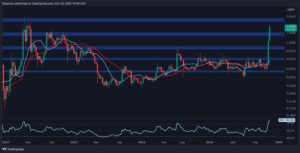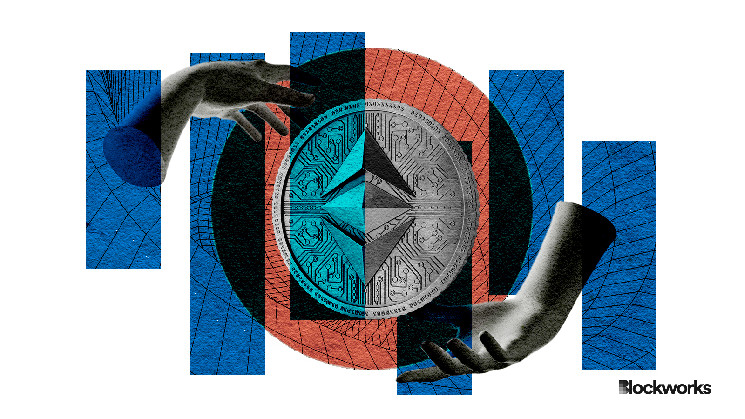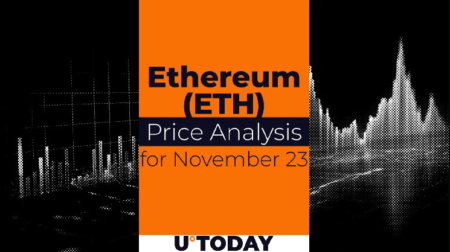Since Ethereum’s transition from proof-of-work to proof-of-stake, some have suggested this makes ETH, or at least staking ETH, a security.
These arguments don’t stand up to scrutiny.
Properly understood, staking ETH is a technical service to ensure transactions on the Ethereum network are processed properly and securely, rather than as an investment subject to securities laws. This is the case even where third parties, like node operators or exchanges, facilitate the staking of ETH. Stakers’ expectations of profit come from staking rewards and the market for ETH, not the administrative and technical services provided by third parties.
The legal framework: Defining “investment contract”
Whether or not an instrument or activity is subject to securities law depends on the definition of “security.”
Under US federal securities law, a security is defined to include a number of instruments, including an “investment contract.” Various court decisions have refined the meaning of this term, but an “investment contract” generally means a contract, scheme or transaction where there is an investment of money; (2) in a common enterprise; (3) with the reasonable expectation of profits; (4) derived substantially from the efforts of others.
This meaning originates from the US Supreme Court’s decision in the Howey case, which involved orange groves and their profits. The court concluded that if a third party sold orange groves along with a contract to manage the grove and share its profits, this was an investment contract subject to securities laws — purchasers were not merely buying land, but were instead investing money to earn profits based on the third party’s efforts in growing and selling oranges.
Decisions since Howey have clarified that the “efforts of others” must be “the undeniably significant ones, those essential managerial efforts which affect the failure or success of the enterprise.” Efforts that are administrative or “ministerial” do not create an investment contract.
With this concept of “investment contract” in mind, Ethereum’s transition to proof-of-stake clearly did not turn ETH itself into an investment contract. Holding ETH does not, on its own, entitle the holder to staking rewards, and so the transition to proof-of-stake did not give rise to an investment contract.
A more nuanced argument is that staking ETH is an investment contract, but this argument also does not withstand scrutiny.
As a technical matter, staking ETH means that ETH is sent to the Ethereum deposit contract and associated with a specific validator; that is, an instance of software designed to process transactions on the Ethereum network. If there is a hardware or software failure that causes the validator to break Ethereum’s rules for validating transactions, the network applies a penalty to the staked ETH (referred to as slashing) associated with that validator. The ETH staked to a validator essentially stands as a financial guarantee that the validator will perform as expected.
The case where the ETH staker operates the validator themselves — sometimes referred to as solo staking — is the simplest case to analyze. As there are no “others” exerting efforts, there can be no investment contract.
Staking with a provider, through a liquid staking protocol or exchange
Some ETH stakers may prefer to have other parties operate validators on their behalf.
More complex situations — like node operators, liquid staking protocols or a centralized exchange’s staking services — require further analysis of whether this relationship creates an investment contract.
Read more from our opinion section: Ether is the Schrödinger’s cat of crypto
Typically, staking with a node operator does not involve actually transferring staked ETH to the node operator. Instead, the staker associates their ETH with a validator operated by the node operator and specifies the staker’s own address as the withdrawal address for the staked ETH and any rewards. All staking rewards and the original ETH can only be withdrawn to an address controlled by the staker, not the node operator. This ensures the staker always retains ownership and control of their ETH; there is no investment or other transfer of value to another party.
Similarly, with liquid staking protocols, the protocol — that is, a smart contract deployed on Ethereum — programmatically associates staked ETH with validators run by node operators willing to operate validators on behalf of stakers. When ETH is staked using the protocol, the staker receives a transferable token that can be redeemed for the staker’s ETH as well as any accrued rewards.
Again, this is programmatically facilitated by the protocol rather than a third party. Importantly, neither node operators nor any other third parties acquire ownership or control of the staked ETH or staking rewards.
Users of centralized exchanges with staking services can also instruct the exchange to stake their ETH on their behalf. The exchange then arranges for users’ ETH to be staked to validators operated by the exchange or a third party. Although custodial exchanges do have custody of their users’ ETH, their terms of service are generally explicit that the staked ETH belongs to their users. The exchange’s role is arranging for ETH to be staked to validators and accounting for the rewards.
In all of these situations, it is debatable whether there is an “investment of money” in a “common enterprise.” Stakers retain legal ownership of their staked ETH, and — except in the case of custodial staking services — do not even transfer their ETH to another party. This contrasts starkly with an investment scheme where money or other assets are transferred to a “promoter” who has considerable discretion over how those investments will be used to earn profits.
However, even assuming ETH staking does involve a common enterprise when involving node operators or exchanges, stakers’ profit expectations aren’t primarily linked to third-party efforts.
Staking rewards consist of consensus layer rewards, generated by the Ethereum network itself when validators propose or attest to new blocks. They also consist of execution layer rewards, essentially payments from users to validators for prioritizing their transactions.
The timing and amount of these rewards depend on factors like the total number of validators, Ethereum users’ willingness to pay for transaction prioritization and Ethereum network conditions. As rewards are received in ETH, stakers’ profits may also be influenced by the market price of ETH in their currency.
What this means is that stakers must anticipate earning profits based on network and market dynamics, rather than the efforts of node operators or exchanges facilitating staking.
In addition, the activities undertaken by node operators or exchanges are not “entrepreneurial” or “managerial,” as explained in the case law. Although node operators or exchanges may perform technical and other services that allow the stakers to earn rewards, these third parties typically use similar hardware infrastructure, run open source software and follow similar best practices for securing and operating their systems. They do not have proprietary methods or special expertise that allow their users to earn more rewards than others providing similar services. In fact, the reward rates for validators operated by different node operators tend to be very close to one another, rarely different by more than a tenth of one percent.
Lessons from recent SEC cases
All of the above doesn’t mean that staking could never be part of a broader investment scheme that is subject to securities laws.
In February 2023, Kraken settled with the US Securities and Exchange Commission over charges that Kraken’s staking services in the US were contrary to federal securities laws. And more recently, in late March 2024, a US district court judge declined to dismiss claims by the SEC with respect to Coinbase’s staking services.
In the case against Kraken, the SEC alleged that the exchange retained discretion over rates of staking rewards received by users, smoothed out payment of rewards to users and maintained a pool of unstaked tokens so that users could effectively bypass lock-up periods applicable to their staked tokens. Similarly, the Coinbase decision refers to allegations that, at one point, Coinbase maintained a liquidity pool similar to Kraken’s. Critically, these alleged features are specific to how these exchanges provided staking services. They are not attributes of ETH or staking generally.
Importantly, neither of these cases is a definitive legal decision that these (or any other) staking services are an offering of securities under US securities laws. Kraken settled the charges without admitting or denying the SEC’s allegations and agreed to wind down its staking services within the United States. The Coinbase decision only establishes that the SEC’s allegations are plausible enough to continue through the litigation process.
Conclusion: Staking as a technical service, not a security offering
Even when stakers work with other parties like node operators and exchanges to stake their ETH, stakers’ profit expectations come from network and market conditions that are independent of the efforts of these third parties. The economic reality is that these third parties are more like administrative or technical service providers than promoters or managers of an investment scheme.
The fact that ETH can be staked does not mean it is a security, and staking ETH to earn staking rewards does not necessarily give rise to a securities offering.
Evan Thomas is General Counsel for Alluvial, a software development company supporting the Liquid Collective liquid staking protocol. He was previously at Wealthsimple, Canada’s largest consumer fintech, where he was Head of Legal for Wealthsimple’s crypto trading platform. While at Wealthsimple, Evan helped launch Canada’s first regulated staking product. Before Wealthsimple, Evan was a litigator at Osler, Hoskin & Harcourt LLP for nearly 15 years. Among other notable cases, Evan was hearing counsel to 3iQ Corp. in its appeal securing regulatory approval for Canada’s first publicly traded bitcoin fund in 2019.
Read the full article here









